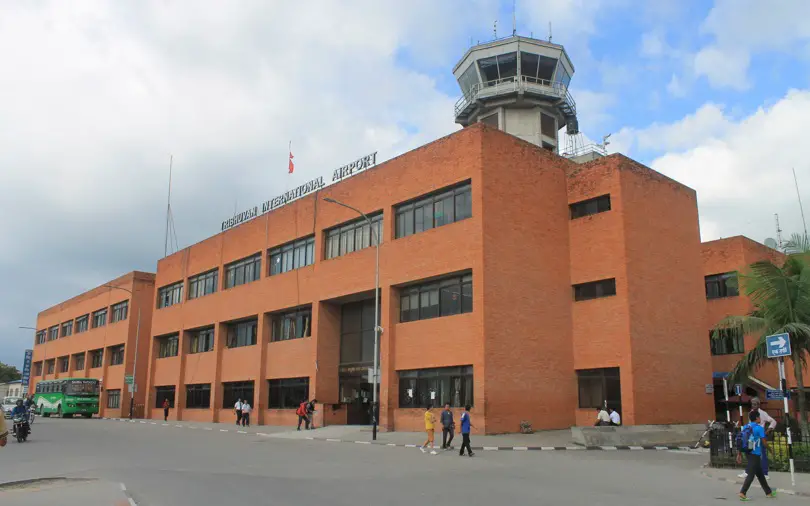Nepal is a landlocked country in South Asia, known for its diverse culture and natural beauty. The Himalayan country has one of the toughest geography in the world. But how did this country develop its aviation industry? In this blog post, let’s explore the history of aviation in Nepal, from its beginnings to its current status.
History of Aviation in Nepal
The Beginning
The history of aviation in Nepal dates back to 1949 AD when a Beechcraft Bonanza carrying the then-Indian ambassador to Nepal landed on a cow grazing field in Gauchaur. This was the first recorded flight in Nepal, and it marked the beginning of a new era of transportation and communication for the isolated nation.
Meanwhile, the first charter flight from Gauchaur to Kolkata was conducted by Himalayan Aviation Dakota in 1950. In 1955, King Mahendra inaugurated Gauchaur Airport and renamed it Tribhuwan Airport to honor his father. The airport was later upgraded with a concrete runway and renamed again Tribhuvan International Airport (TIA) in 1964.

Royal Nepal Airlines was the first Nepali airline, which began scheduled service both domestically and internationally in 1958. And TIA witnessed the first jet aircraft to land which was a Lufthansa Boeing 707 in 1967, followed by other international airlines such as Thai International and Indian Airlines.
Construction of More Airports
The late 50s became a breakthrough in the history of aviation in Nepal with the rapid establishment of domestic airports. While the 1960s and 70s saw the expansion of aviation infrastructure and services in Nepal become more prominent across the country. Some of the notable airports that were established during this period include:
| Airports | Date of Establishment (AD) |
| Pokhara Airport | 1958 |
| Simara Airport | 1958 |
| Biratnagar Airport | 1958 |
| Bhairawa Airport | 1958 |
| Rajbiraj Airport | 1958 |
| Nepalgunj Aiport | 1961 |
| Bhadrapur Airport | 1963 |
| Lukla Airport | 1964 |
| Tumlingtar Airport | 1971 |
| Syanboche Airport | 1971 |
These airports enabled the connectivity of remote regions of Nepal with the capital and other major cities, as well as facilitated tourism, trade, and development. Royal Nepal Airlines also acquired new aircraft such as Boeing 727/100, Twin Otter, Avro 748, and Pilatus Porter to operate on these routes.

Regulatory Body CAAN
Nepal’s aviation sector is regulated by the Civil Aviation Authority of Nepal (CAAN), which was established in 1998 as an autonomous body under the Ministry of Culture, Tourism, and Civil Aviation. However, CAAN has been criticized for its lack of independence, transparency, and accountability, as well as its inability to enforce safety standards and oversight.
As a result, Nepal has been placed under the International Civil Aviation Organization (ICAO) Significant Safety Concern (SSC) list since 2013. That means, Nepal does not comply with the minimum safety requirements of the ICAO. This has affected the reputation and credibility of Nepal’s aviation industry, as well as restricted its access to international markets. The Yeti Airlines crash near Pokhara airport has once again, dissolved the chances of Nepal being whitelisted.
Do Read: European Commission continues to blacklist Nepali airline companies
The Present Day Situation
Nepal’s aviation market is highly competitive, with more than 20 domestic airlines and 30 international airlines operating in the country. Nepal Airlines Corporation, the national flag carrier, has suffered from mismanagement, corruption, and political interference, which have led to its decline and losses.
NAC currently operates only two Airbus A320 and two Airbus A330 aircraft for international flights, and six Twin Otters for domestic flights. However, a ray of hope has arisen with the airlines progressing to pay their debts and purchasing more aircraft for conducting province-to-province flights.

TIA stands as the busiest airport in Nepal with dozens of flights flying to and from. By the way, there are two new international airports now: Gautam Buddha Int’l Airport (GBIA) and Pokhara Regional International Airport (PRIA). But both airports are bearing no to negligible international flights due to geopolitical issues. Although, efforts have been made for GBIA’s operation, with India being positive for solving ISL issues. While PRIA’s future remains uncertain.
History of Aviation in Nepal Conclusion
Nepal’s aviation industry has come a long way since its inception in 1949. It has faced many challenges but also seized many opportunities. It has contributed to the development and prosperity of tourism in the faraway Himalayan region. However, the efficient management and improvements of the airports still remain a tough challenge with the constant rise of geopolitical issues as well as deep-rooted corruption in the country.
Also Read: Dangerous Airports in Nepal, Location, Information



